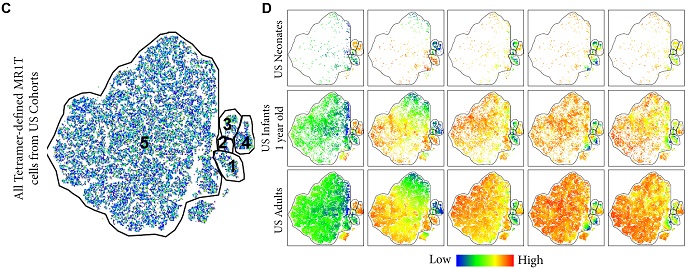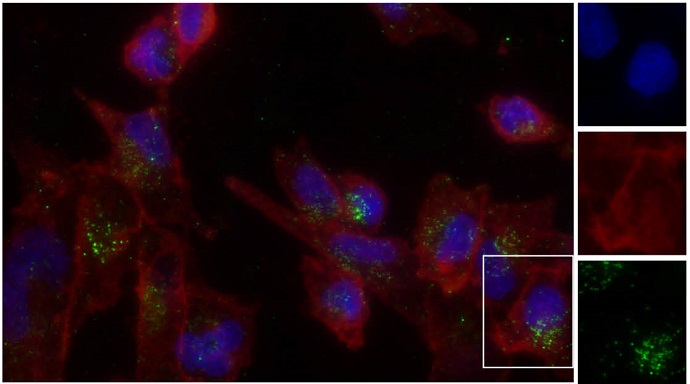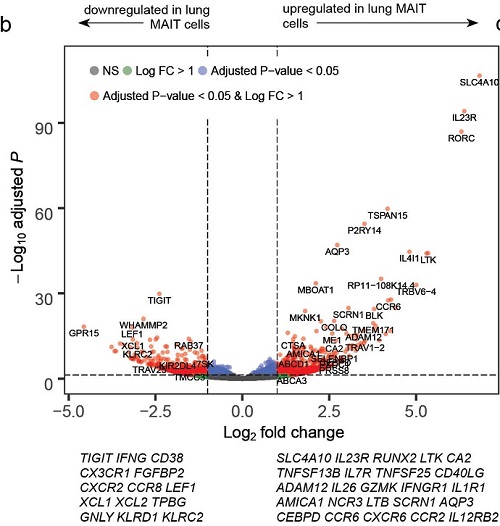David Lewinsohn Lab
The Lewinsohn laboratory studies cellular immunity against Mycobacterium tuberculosis (Mtb), a leading cause of infectious disease mortality worldwide. We believe that improved vaccines and diagnostics will require an understanding of the mechanisms by which T cells recognize cells infected with this bacterium. Because Mtb is a facultative intracellular pathogen, cytotoxic T cells may be important in the recognition and elimination of infected cells.
Research questions we are investigating
What are the immunodominant antigens recognized by humans infected with Mtb?
Using a combination of genomic and proteomic approaches, we have begun to elucidate the antigen repertoire. Interestingly, HLA-B appears to play a dominant role in the presentation of Mtb-derived peptides. In addition to defining these antigens, we are exploring the diagnostic potential of these antigens and tetramers in the diagnosis of TB.
What are the molecular requirements for the activation of Mtb-reactive T cells?
We have found that Mtb-reactive T cells are both classically (HLA-A,B,C) and non-classically restricted. We have found that the molecules HLA-E and MR1 are capable of displaying Mtb-derived antigens. MR1-restricted T (MR1T) cells are defined by their recognition of metabolite antigens presented by MR1. Mucosal-associated invariant T (MAIT) cells are the predominant subset of MR1T cells expressing an invariant TCR alpha chain, TRAV1-2. While these cells were initially described as recognizing riboflavin metabolites, it has become increasingly clear that there are diverse microbial antigens, and that MR1Ts can distinguish these antigens. We are actively defining those antigens derived from Mtb, and exploring how infections might drive the expansion and maintenance of the cells. In this regard, we have focused on the lung as the site where these cells are expanded, particularly in the context of human TB.
How do antigens derived from Mtb gain access to the MHC-I antigen processing pathway?
We are exploring the hypothesis that the Mtb-phagosome can process and present antigens, in effect allowing the immune system to focus on pathogens found within this organelle.
What is the role of the lung epithelium in controlling the growth of Mtb?
We have found that both classically and non-classically restricted cells recognize Mtb infected lung epithelial cells. We are exploring the mechanisms of antigen processing and presentation, and the ability of these cells to control Mtb growth.
What is the function and phenotype of lung-resident Mtb-reactive CD8+ T cells?
We have found that lung resident cells, particularly MR1Ts, have both an anatomic distribution and effector phenotype that would suggest they could serve to directly control infection with MTb. We are exploring the ability of these T cells to inhibit mycobacterial growth.
Our Collaborators
USA
Colorado State - Karen Dobos, PhD & Carolina Mehaffy, PhD
Oklahoma Health Sciences University - William Hildebrand, PhD & Curtis McMurtrey, PhD
University of Chicago - Erin Adams, PhD
La Jolla Institute of Allergy and Immunology - Mitch Kronenberg, PhD
Trudeau Institute - William Reiley
University of Washington - Kevin Urdahl
South Africa
African Health Research Institute AHRI - Emily Wong, MD & Thumbi Ndung'u, PhD
Institute of Infectious Disease and Molecular Medicine,UCT - Digby Warner, PhD, Graeme Meintjes MD, & Valerie Mizrahi, PhD
South African Tuberculosis Vaccine Initiative, UCT - Tom Scriba, PhD & Mark Hatherill, MD
Stellenbosch University - Gerhard Walzl, MD, Nelita Du Plessis-Burger, PhD & Leanie Kleynhans-Cornelissen
Australia
University of Sydney - Prof Warwick Britton & Prof Angelo Izzo
Monash University - Prof Jamie Rossjohn & Dr. Wael Awad


